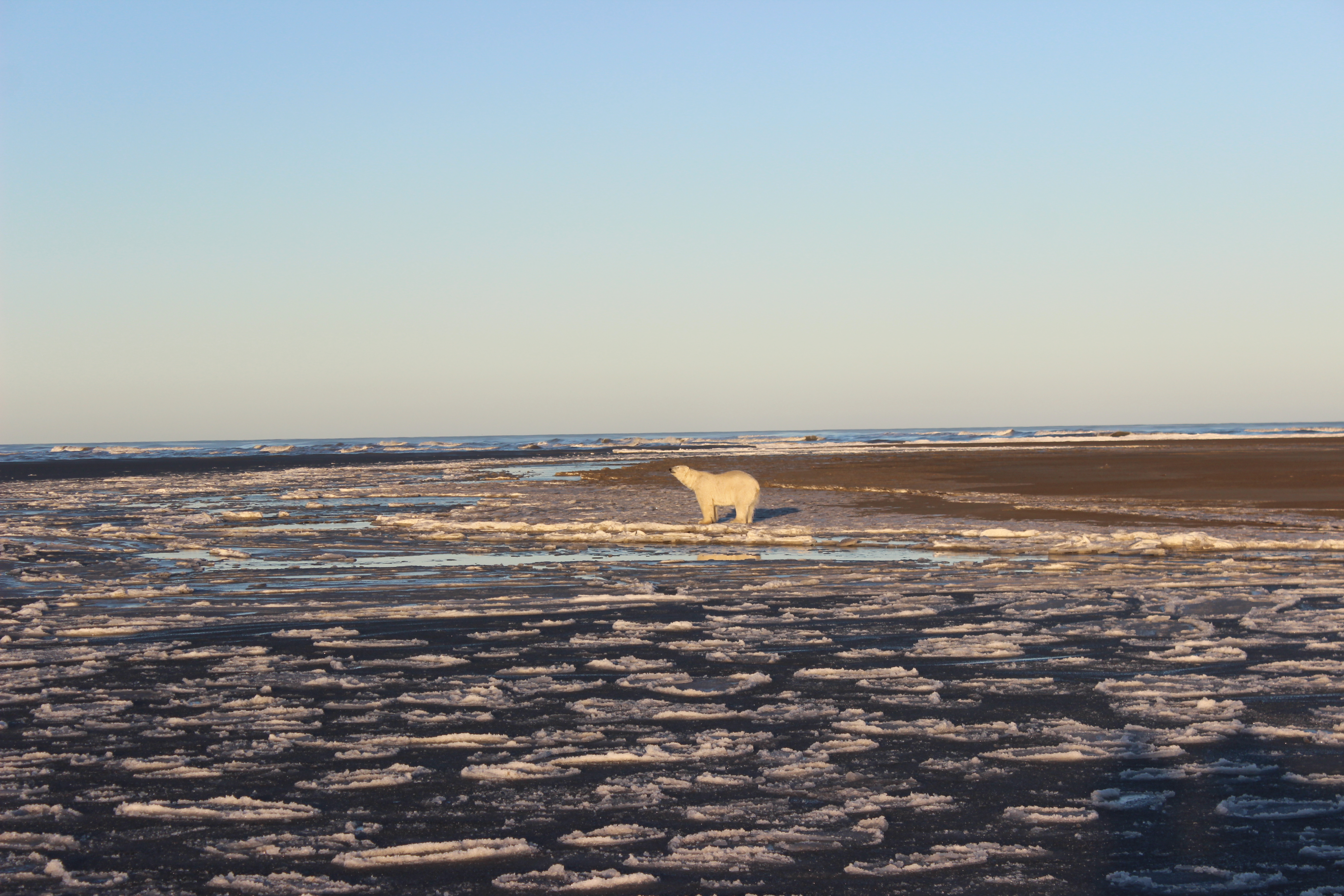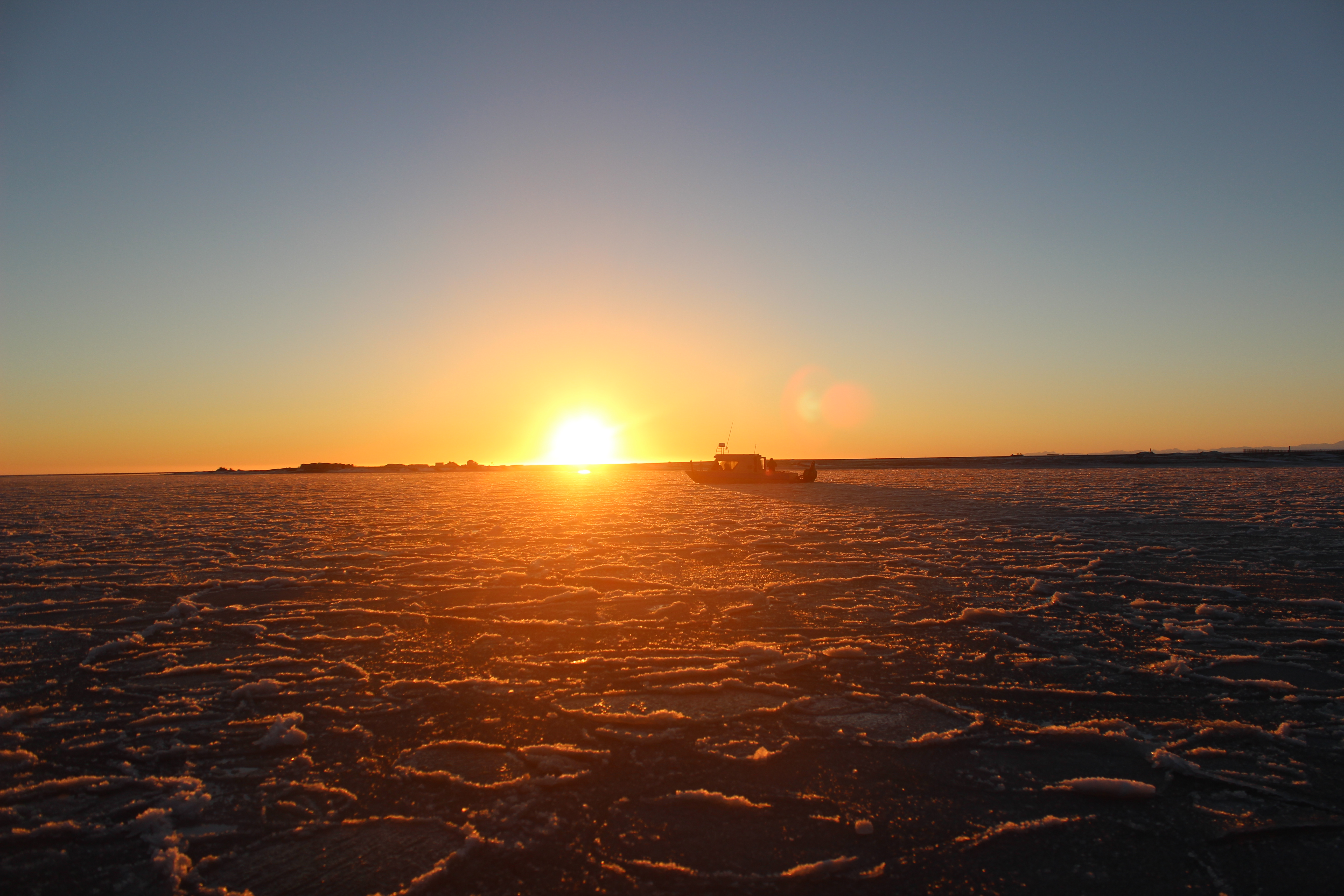Alaska Native whalers celebrate recent gains for Indigenous whaling at IWC
When Alaska Native subsistence whalers went out for this fall's hunt, it was the first in celebration of new International Whaling Commission rules that make subsistence whaling easier.
UTQIAGVIK, Alaska — A few days before Alaska Native whaling crews set out to into the Arctic Ocean in October, a congregation of several hundred gathered at the Utqiagvik Presbyterian Church to bless the bowhead whale hunt.
This year’s service was more than a blessing: It was also a celebration of a historic victory to preserve their indigenous whaling tradition in the face of international geopolitics.
For centuries, Alaska’s Inupiaq have hunted bowhead whales in the Arctic for food. But since 1977, they have been subjected to regulations set by the International Whaling Commission.
Then, in September at a meeting in Brazil, the IWC agreed to renew multi-year aboriginal quotas automatically.
That decision met a longtime demand from Indigenous groups like the Inupiaq, who catch whales each fall and spring, then distribute the meat among residents and use bones and baleen to make handicrafts.
“We’ll now be able to hunt in peace without the anxiety of worrying about an expiring quota,” said Inupiaq leader and whaling captain Crawford Patkotak.
Today, 84 percent of all households in Inupiaq whaling communities eat bowhead whale, according to Stephen R. Braund and Associates, an Alaska-based research firm.

Yet even as the Inupiaq cheer greater control over their whaling practices, they face a new threat that could divide the community: increasing pressure to allow offshore oil drilling.
Last year, Italian oil producer Eni began drilling a new well in U.S. waters off the north coast of Alaska — the first company to do so since 2015.
In November, the U.S. Bureau of Ocean Energy and Management announced it would prepare an environmental impact statement on oil drilling in the Beaufort Sea ahead of a proposed lease sale in 2019.
‘Micromanaged’
At the Alaska Eskimo Whaling Commission’s office, a handwritten wall chart is posted next to windows that frame a view of the choppy Beaufort Sea.
The chart lists whaling crews in the eight villages dispersed across Alaska’s North Slope, an area about the size of Britain, and home to about 9,800 people.
Staffers track each whaling crew’s progress during the two annual hunts, noting how many “strikes” they make using darting guns tipped with harpoons and how many whales they kill. They report this information to the IWC.
“We are a small rural community in Alaska being micromanaged by an international organisation that surpasses our state and federal laws,” said Arnold Brower Jr., executive director of the AEWC, which the Inupiaq set up to meet the IWC’s requirements.
In 1977, the IWC banned bowhead whaling. The U.S. did not oppose it, incensing the Inupiaq in Alaska.
“They didn’t consult us even though we are a (recognized) tribe,” Brower said.
The Inupiaq sued the U.S. government, which ultimately negotiated a whaling quota with the IWC — although one that was below what the tribe considered necessary to meet their food needs.
“It was unacceptable, but a beginning,” Brower said.
Then, in 1986, the IWC instituted a moratorium on all commercial whaling, sparking a row with Iceland, Japan and Norway, which continue to catch whales for commercial and scientific purposes.
Although this did not affect subsistence hunting by the Inupiaq, the renewal of their quotas became entangled with the debate over commercial whaling.
Marine mammal conservationists said Indigenous whaling was mired in commercial whaling politics.
“There is no question native whaling communities and quotas have historically been held hostage by Japan and its bloc in an effort to demand rule changes and resuscitate commercial whaling,” said Patrick Ramage, marine conservation director at the International Fund for Animal Welfare.

Home on the ice
For years, the Inupiaq argued that dire scientific censuses of whale populations were inaccurate because they did not account for the number of mammals that swim under sea ice, breaking thin sections in order to breathe.
“We knew the numbers that were given to us were false based on our own visual sightings and our traditional knowledge, because we’re here and we’re on the ice,” Brower said.
From winter to spring, sea ice extends the distance from the shoreline that the Inupiaq can travel by sled dog and snowmobile to reach open water.
“(The ice) becomes part of this land,” Brower said.
In April, a 50-person delegation of IWC representatives traveled to Utqiagvik (formerly known as Barrow), where they observed Inupiaq hunting practices firsthand.
Bruno Mainini, Swiss commissioner to the IWC and chair of the body’s aboriginal subsistence whaling subcommittee, credits that visit with convincing sceptical delegates that the Inupiaq could sustainably manage the bowhead whale harvest.
“We could visit hunters standing on the ice, how cold it is and how hard it is even in good weather conditions,” he told the Thomson Reuters Foundation in a phone interview.
“People in the north now have the freedom to decide.”
Oil anxiety
Although the Inupiaq welcome recognition of their whaling rights, there is less harmony when it comes to oil prospecting.
The prospect of drilling holds uncomfortable memories for the Inupiaq, when the AEWC and the North Slope Borough, the municipal government, fought an offshore proposal in 2007 in the courts.
Yet today the Arctic Slope Regional Corporation, an Inupiaq-owned company, is investing in offshore drilling opportunities.
“It’s been our position that if offshore development was going to inevitably happen, that we be at the table of decision and we have an opportunity to invest and become a royalty-interest owner to maximize the benefits to our people in the long run,” said Patkotak, the company’s board chairman.
Industry groups said their track record of working with the Inupiaq to minimise their impact on whales, along with existing offshore drilling in non-U.S. Arctic waters, were proof the Beaufort Sea could be explored with minimal risk.
“I have every confidence that the people in our industry would make sure we do everything in our power to operate as safely as we can,” said Kara Moriarty, head of the Alaska Oil and Gas Association.
But past events give some Inupiaq pause.
“Of course we’re concerned because we’ve seen the mess down in the Gulf of Mexico — BP’s blowout,” said Brower, referring to the Deepwater Horizon drilling rig that exploded in 2010.
Brower worries an oil spill could affect krill, the bowhead whale’s main food source. His concern is shared by the Alaska Department of Natural Resources.
“It would obviously be devastating and impact communities for decades,” Natural Resources Commissioner Andy Mack said in an interview.
Reporting by Gregory Scruggs and Max Baring.




